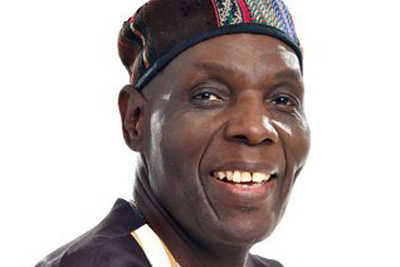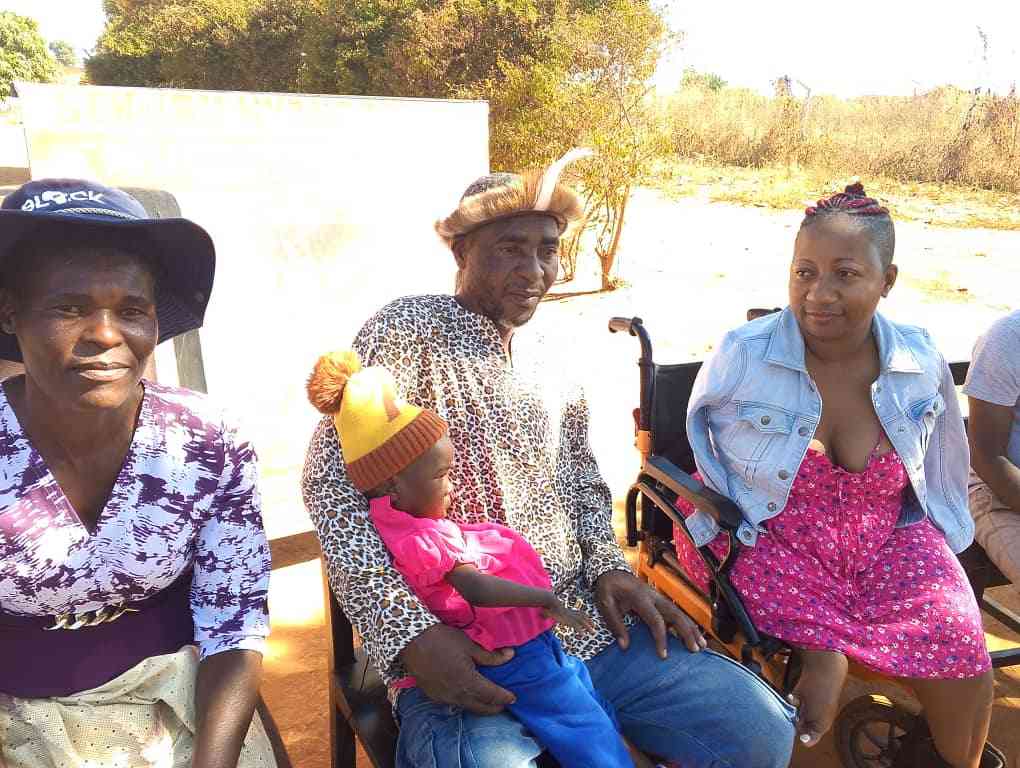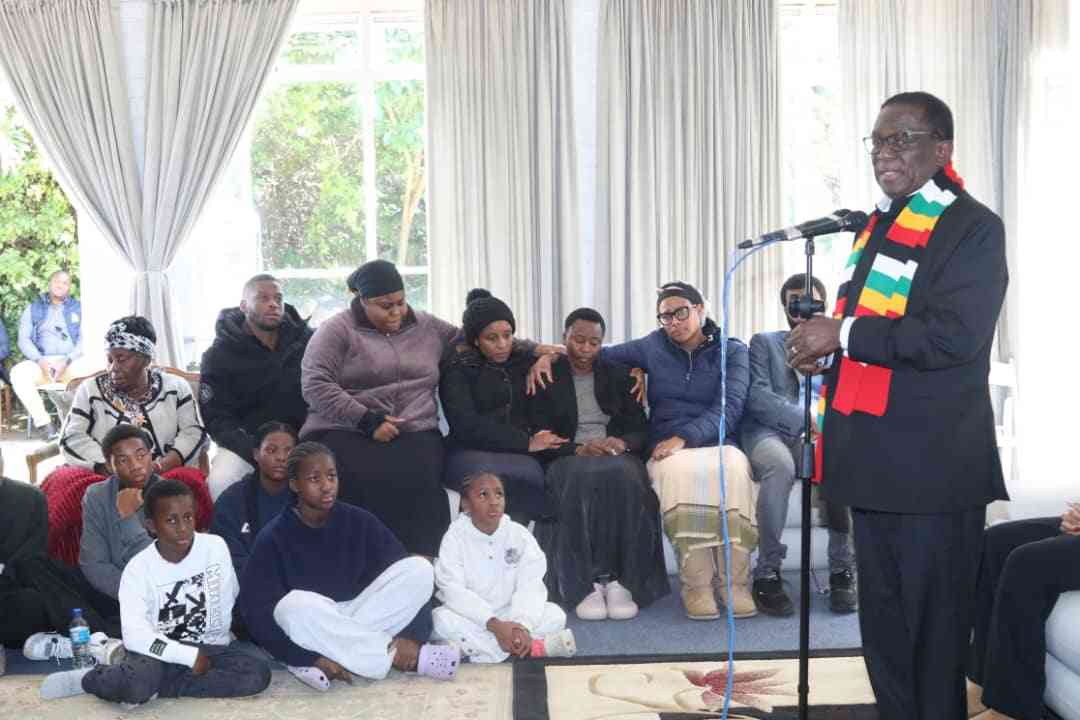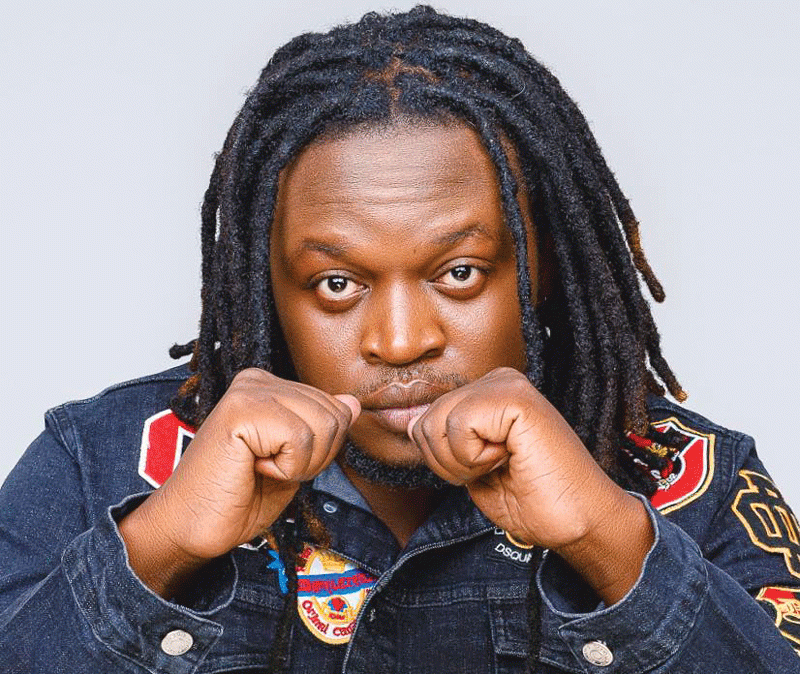
If Mbuya Nehanda, Oliver Mtukudzi and Bob Marley were alive today, I would persuade the government to create a platform on which they would all be awarded the highest honours Zimbabwe can give for their great achievements.
in the groove with Fred Zindi
Mbuya Nehanda is being honoured with a statue now. An appropriate site has been chosen for the erection of her statue. Construction is underway near the Monomotapa Hotel. (Monomotapa is a British corruption of the word “Munhumutapa”)
According to historical sources, the original Mbuya Nehanda was the daughter of Mutota, the first Munhumutapa who lived in the escarpment north of Sipolilo (Chipuriro) in about 1430. The Shona Rebellion, known as the first Chimurenga, erupted in June 1896 with attacks against the mining communities of Mazoe (now Mazowe) north of Salisbury (Harare). These attacks were coordinated by two religious figures, Sekuru Kaguvi and Mbuya Nehanda, aka Nyakasikana.
As medium of the spirit Nehanda, Nyakasikana made oracular pronouncements and performed traditional ceremonies that were thought to ensure rain and good crops. Nyakasikana was also instrumental in organising the nationwide resistance to colonial rule during the First Chimurenga of 1896-7.
In my opinion, people who significantly contribute to the history of this country deserve statues which remind us of their heroic efforts.
We certainly need to construct statues for Mtukudzi and Marley. Among his several achievements, Tuku blessed this nation with hundreds of his compositions which entertained thousands of households in Zimbabwe. He also put Zimbabwe on the international map when he toured several countries throughout the world. He was inducted into the Afro-Pop Hall of Fame in New York and received an honour from Afro-Pop Worldwide.
Tuku also constructed Pakare Paye Arts Centre in 2004 near his Twin Lakes Park home in Norton. It is at this centre that he began to give Zimbabwean youngsters opportunities to develop their skills in music and drama free of charge. He mentored youngsters such as Donald Kanyuchi, Sam, his own son who later died in a car accident, Munyaradzi Mataruse and Ashton Tapiwa Nyahora, aka Mbeu, to mention only a few.
- Chamisa under fire over US$120K donation
- Mavhunga puts DeMbare into Chibuku quarterfinals
- Pension funds bet on Cabora Bassa oilfields
- Councils defy govt fire tender directive
Keep Reading
During his spare time, Tuku would also dedicate his services to the community by taking part in HIV and Aids awareness programmes as well as giving charity performances.
In 2013, he became Unicef’s goodwill ambassador for Eastern and Southern Africa in recognition of his good works.
Tuku had also started on a water project in Norton before his death on January 23 last year.
As he put it: “The shortage of water in Norton — run by Norton Town Council — is a monumental irony. We have Lake Chivero in Norton, only a few kilometres away from here, but City of Harare, which is 40km away, dominates the water uptake from this lake and we are left with water shortages. That is not fair.” Norton town, which is etched between two major water bodies, Darwendale Dam and Lake Chivero, has not been developed to pump, treat and supply its water and relies on Harare City Council. One of the projects Mtukudzi had embarked on, was to work with Norton Town Council to find ways and means of pumping water from Lake Chivero and trying to source chemicals to treat that water and supplying it to the residents of Norton.
Norton, which has a total population of close to 100 000 and requires 20 megalitres of water every day, would have benefited from this project if it had come to fruition, but Tuku’s premature death put a stop to this ambitious project.
Although a Jamaican by birth, Marley also significantly contributed to the history of this country. In Zimbabwe, interest in the life of Marley has continued to grow since 1980 when he graced the independence celebration ceremony in this country. We have had several Jamaican musicians such as Jimmy Cliff, Gregory Isaacs, Don Carlos, Ijahman Levi, Dennis Brown, Freddie McGregor, Shabba Ranks, Maxi Priest, Sizzla Kalonje, Culture, Luciano, Cocoa Tea, Capleton, Beenie Man, Mavado, Fantan Mojah, Jah Cure, Morgan Heritage, Busy Signal, Christopher Martin, Romain Virgo and Tarrus Riley visiting Zimbabwe since then, but no other Jamaican has done more to make the same impact or boost Zimbabwe’s brand name internationally as Marley did. Since his demise he has grown in stature from superstar to legend to iconic status, a remarkable achievement for someone from such a humble background.
A few years ago, before we even talked about Mbuya Nehanda’s statue, there was talk of building a statue to honour the international superstar and icon who expressed solidarity with the people of Zimbabwe on the eve of their independence. That talk seems to have fizzled out.
Over the years, since his death, on May 11, 1981, musicians have got together to commemorate his contribution and his death. This, they have done without any assistance from the politicians. But why should it be the musicians only who should recognise Marley’s input and achievement in Zimbabwe? The green light was given long ago when Zimbabwean artiste Martin Chemhere asked the Marley family to allow him to build his statue in Rufaro Stadium. The Marley family agreed, but we do not know what has been holding this up. By now Rufaro Stadium would have been an additional tourist attraction centre. We do not know the reason why Marley’s statue has not been erected in Zimbabwe. Could it be due to budgetary constraints? Is it because the politicians here decided against the idea? Is it because Marley smoked ganja? Is it because he was a foreigner? Or is it because there are no suitable sculptors within Zimbabwe capable of handling that kind of work?
The latter is definitely not the reason why this statue has still not been built.
Zimbabwe is full of
world-renowned sculptors. David Mutasa built Prince Charles’s sculpture in Brixton, London. Bryn Muteki also did some wonders in Germany. We also have Dominic Benhura, another internationally recognised sculptor, who can handle the work without any supervision. Others include Sylvester Mubayi, Tapfuma Gutsa, Lazarus Takawira, Ennica Mukombera, Godfrey Kututwa, Joseph Muzondo, Leocardia Ndandarika and Gideon Nyanhongo.
If statues of Mbuya Nehanda and the late vice-president Joshua Nkomo can be erected in the city centres of Harare and Bulawayo respectively, surely the same can be done for Mtukudzi and Marley. Marley’s contribution in the making of history for Zimbabwe is immense and must be recognised by all.
To me, a suitable location for Marley’s statue would be Africa Unity Square, while Pakare Paye in Norton would accommodate the Mtukudzi statue. These would also attract tourists to Harare and Norton respectively.
Every tourist who visits New York in America always makes sure that they see the Statue of Liberty. They also pay to gain entrance into Ellis Island where it is situated.
A French historian, Edouard de Laboulaye, made the proposal for the statue. Funds were contributed by the French people, and work began in France in 1875 under a sculptor named Frederic-Auguste Bartholdi. (Many people think that because the statue is in America, it was constructed by the Americans only). Exhibits on the history of the Statue of Liberty, including the statue’s original 1886 torch, are contained in the statue’s base. Millions of dollars through tourism have been raised over the years simply by the erection of this monument.
The same could be done in Zimbabwe for internationally-known icons such as Mtukudzi so that future generations will always cherish and be proud of our history.
Schools could be persuaded to make occasional visits to the monument and help raise money if the statue is built in a secure enclosure where people are asked to pay for the visit to the site just like they do when they make end-of-year trips to Victoria Falls or to the Great Zimbabwe monuments in Masvingo.
Marley is no doubt an icon. In 1980, he performed in Zimbabwe during the Independence Day celebrations, the only African country in which he performed at independence. He also sang the song, Zimbabwe, which he wrote in 1978 with the help of Gibson Mandishona for the Zimbabwean freedom fighters. When the Union Jack flag of British rule was brought down, and the flag of Zimbabwe was raised, after Robert Mugabe had taken the oath as Zimbabwe’s new prime minister, another Robert (Marley) stood waiting.
Marley is indeed an international hero never to be forgotten. A statue of him in a strategic place will definitely remind future generations who this philanthropic hero was and how he contributed towards and the after-independence making of history in Zimbabwe.
l Feedback: [email protected].











